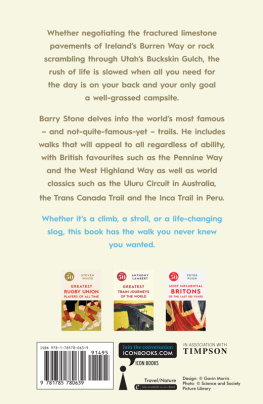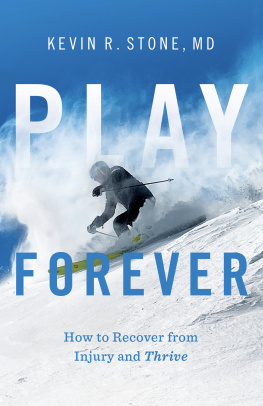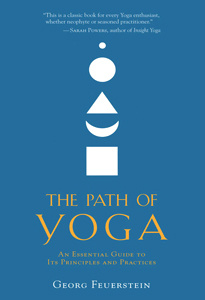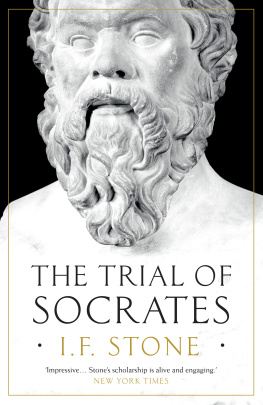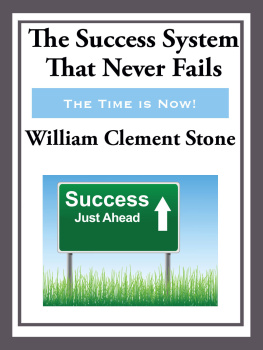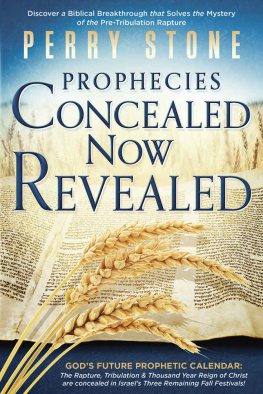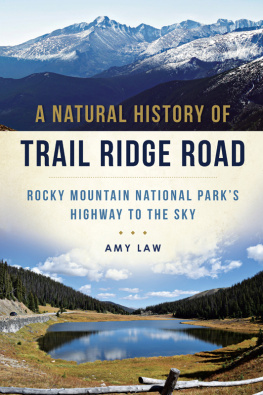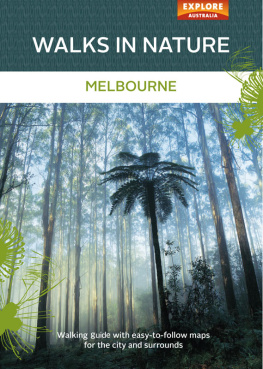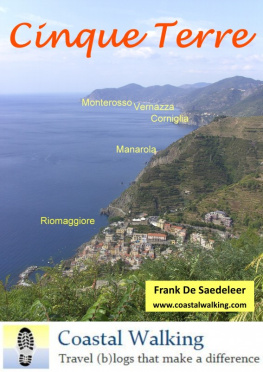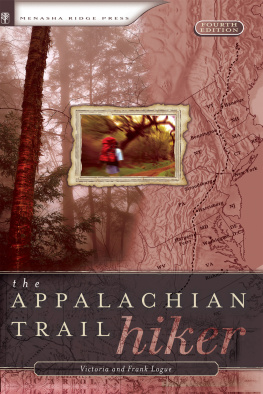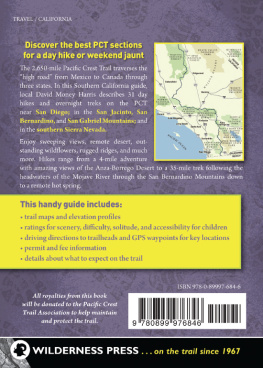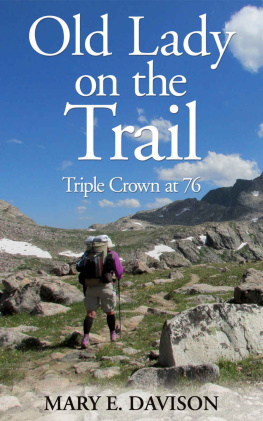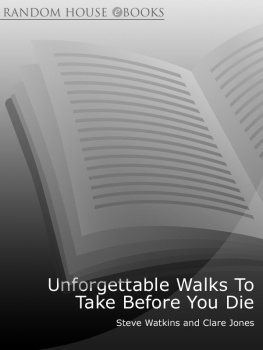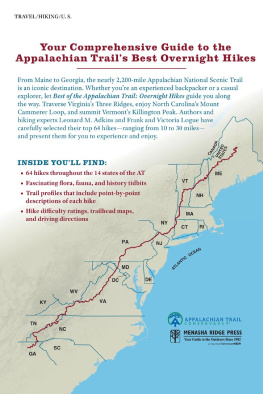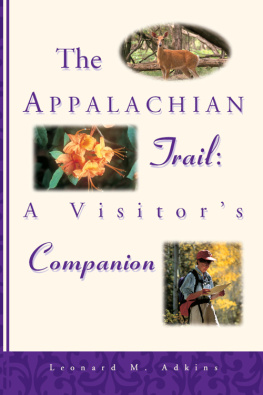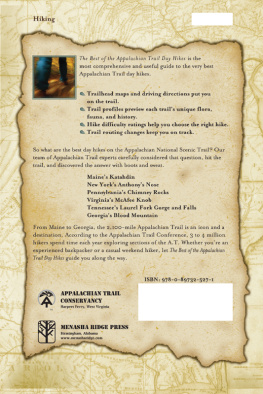
GREATEST WALKS OF THE WORLD
IN ASSOCIATION WITH
TIMPSON
Also available
The 50 Greatest Rugby Union Players of All Time
The 50 Most Influential Britons of the Last 100 Years
The 50 Greatest Train Journeys of the World
Geoff Hursts Greats: Englands 1966 Hero Selects His
Finest Ever Footballers
David Gowers Greatest Half-Century

GREATEST WALKS OF THE WORLD
BARRY STONE

Published in the UK in 2016 by
Icon Books Ltd, Omnibus Business Centre,
3941 North Road, London N7 9DP
email:
www.iconbooks.com
Sold in the UK, Europe and Asia
by Faber & Faber Ltd, Bloomsbury House,
7477 Great Russell Street,
London WC1B 3DA or their agents
Distributed in the UK, Europe and Asia
by TBS Ltd, TBS Distribution Centre, Colchester Road,
Frating Green, Colchester CO7 7DW
Distributed in Australia and New Zealand
by Allen & Unwin Pty Ltd,
PO Box 8500, 83 Alexander Street,
Crows Nest, NSW 2065
Distributed in South Africa by
Jonathan Ball, Office B4, The District,
41 Sir Lowry Road, Woodstock 7925
Distributed in India by Penguin Books India,
7th Floor, Infinity Tower C, DLF Cyber City,
Gurgaon 122002, Haryana
Distributed in Canada by Publishers Group Canada,
76 Stafford Street, Unit 300,
Toronto, Ontario M6J 2S1
Distributed in the USA
by Publishers Group West,
1700 Fourth Street, Berkeley, CA 94710
ISBN: 978-178578-063-9
Book People edition ISBN: 978-178578-087-5
Text copyright 2016 Barry Stone
The author has asserted his moral rights.
No part of this book may be reproduced in any form, or by any means, without prior permission in writing from the publisher.
Images see individual pictures
Typeset and designed by Simmons Pugh
Printed and bound in the UK by Clays Ltd, St Ives plc
ABOUT THE AUTHOR
B arry Stone began his writing career in 1998 as a travel writer before authoring his first book in 2007, I Want to be Alone, on the history of hermits and recluses. Nine more titles have followed, and in between books he indulges his passion for walking and taking to trails wherever in the world he finds himself when wearing his travel writers hat. Barry lives on a quiet acre in Picton, an hours drive south of Sydney with his wife Yvonne and children Jackson and Truman. He rarely has a day when he is neither writing nor walking.
INTRODUCTION
W alking, if you want to reduce it to its base mechanics, is little more than a controlled fall, a forward movement initiated by the legs, one of which balances us in an upright position before pushing us forward, while the other swings through in a rhythmic motion just in time to prevent us from collapsing flat on our faces. If you believe the best guess of evolutionary biologists its likely the advent of walking of becoming bipedal arose 45 million years ago when our ancestors first became providers for family units and so needed to free up their hands in order to bring home food and provisions. At the same time that our heels, hips and knees were becoming enlarged to carry the extra weight required of them, walking on two legs began to free up those same hands for rock-throwing in order both to procure food and prevent the throwers from becoming food themselves. Over time a lot of time what began as something that was purposeful and survival-driven, a process of natural selection, morphed to become our most efficient mode of travel. From an exo-skeletal point of view running is, by contrast, 75 per cent less efficient than walking. Which I guess means apologies are in order to all the joggers out there who think it better to run than walk. Millions of years of trial and error, and the science of human design, say otherwise.
The era of recreational walking walking for pleasure was inaugurated in England in the late 18th and early 19th centuries partly as a reaction against increasing industrialisation, partly because the Industrial Revolution brought increased leisure time to an already leisurely aristocracy, and partly nudged along by the Age of Enlightenment. But mostly it was thanks to the era of heroic Romanticism, which lauded the visceral emotive responses born from getting out and confronting the raw beauty of nature, the expressions of which were then being seen everywhere in art, music and literature. Pedestrianism the pastime of watching other people simply walking became for a time the largest spectator sport in late 19th century America, eclipsing even baseball, which was still in the process of finding its own legs. Walking marathons were so popular they began to take on gladiatorial dimensions when they were extended over so many days they doubled as rather gruesome endurance tests in how not to sleep. How different that is to the new pedestrianism of today advocated by the American urban designer and futurist Michael Arth redesigning urban spaces where walking and cycle paths take the place of roads, pushing the bitumen and those horrid cars that go with them out to a towns perimeter, thus returning cities to the people.
People who indulge in recreational walking in the 21st century do so for many reasons. Me? Well, the reason I walk is not because I like the physical act of walking so much as because I like the landscapes, gorges, ridgelines and suspension bridges through and over which it takes me. I walk because for me it is reductive it simplifies life, reduces it to a few core decisions. Turn left. Turn right. Go straight. Keep going. Ignore the weather. Be inventive. Dont look back. I like to walk because it is a slow pursuit, rhythmic and repetitive and purposeful and exhilarating. My feet have taken me to places no other mode of transport could: through the sinewy web of iron and steel that makes up the 52,800 tonnes of the Sydney Harbour Bridge, thankfully now accessible to all who want to climb it and a prime example of how our urban environments are becoming increasingly accessible with every new piece of adapted infrastructure; and along the High Line, an old elevated rail line through New Yorks meatpacking district, now a triumph of urban renewal National Geographic called the Miracle above Manhattan. Whether negotiating the fractured limestone pavements of Irelands Burren Way, rock scrambling through Utahs Buckskin Gulch, moving over ice floes in the Russian arctic or along the Cornish coast my mind works best when these places slow it down, when everything you need for the day is on your back and when the promise of a well-grassed campsite, cosy hotel, or B&B is all you need to keep you moving forward.
When walking I can be the vagabond of no fixed address Ive always longed to be, a wanderer who seeks anonymity and passes through landscapes unnoticed, a passive participant in life. I walk because, in words echoed by the French philosopher Frederic Gros, I have a need for contemplation. Contemplative walking is what inspired Walt Whitman, Robert Frost, William Wordsworth and C. S. Lewis. It frees up the mind to find rhythms otherwise suppressed by the demands of everyday life. It problem solves and leaves behind, according to Jean-Jacques Rousseau, all base and terrestrial sentiments. Rousseaus mind only worked, he said, when his legs were in motion. Walking may not of itself provide solutions to lifes complexities, but it can facilitate them, expose them. Whittle them down into manageable, bite-sized chunks.
Next page
